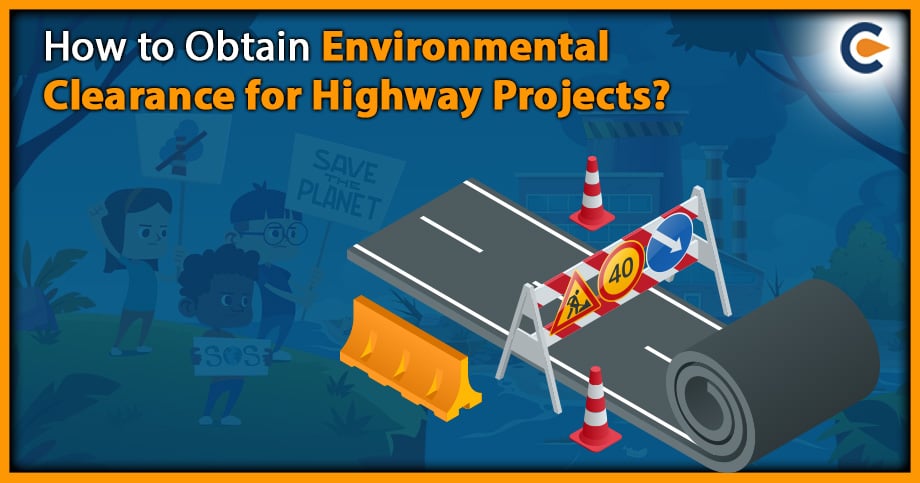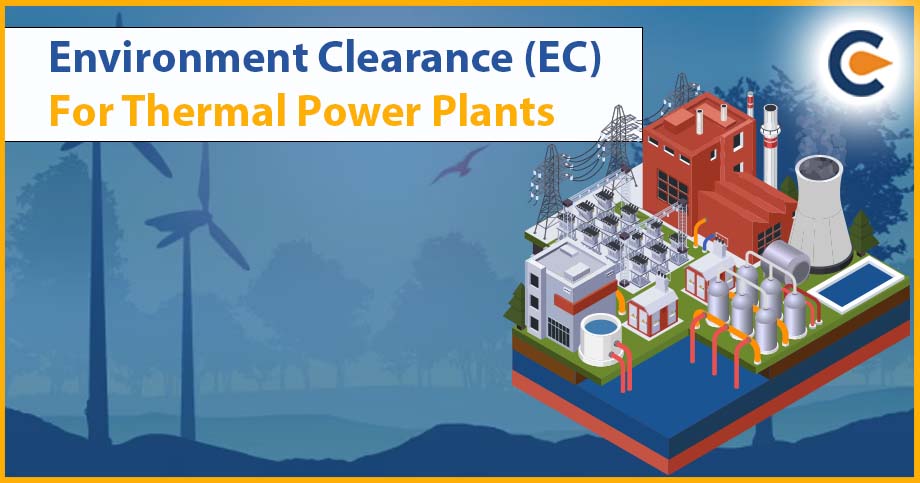Environmental Clearance (EC) for Highway projects is mandatory under the Environmental Impact Assessment notification 2006. As we know, roads and highways improve the economic and social welfare of the people. At the same time, it can potentially damage the surrounding ecosystem. Environmental Clearance for Highway projects is approval from the government for road and highway construction that may cause any environmental and socio-economic damage. Identifying and assessing potential environmental impact should be integral to the project cycle. EIA should commence early in the planning process to fully consider alternatives and avoid later delays and complications.
Need for Environmental Clearance for Highway Projects
A highway project is developed for the economic and social welfare of the people. At the same time, it creates environmental impacts on the environment. The people and property in the same path of road works are affected. The project may damage sensitive ecosystems and lead to soil erosion, change drainage patterns and groundwater, interference with wildlife movement, loss of agricultural lands, resettlement of people etc.
- EIA should be planned by keeping the environmental impacts in mind and reducing them. Therefore it becomes essential to take Environmental Clearance for the projects.
- Highway authorities should have a designated staff member responsible for environmental matters and knowledge of environmental laws and regulations.
Acts and Rules Governing EC for Highway Projects
- EIA Notification, 2006.
- Water & Air Act
- The National Tribunal Act, 2010[1]
- The Environmental (Protection) Act, 1986, amended 1991
- Wildlife Clearance as per Wildlife (Protection) Act 1972
- CRZ (Coastal Regulation Zone) Rules.
Permissions Required Before Starting A Highway Project
- Conversion of land use from the State revenue department for setting up camps and plants
- Forest Clearance as per Forest (Conservation) Act, 1980
- Prior permission for felling of trees from Forest dept. / District Authorities
- NOC under the Hazardous and Other Wastes (Management and Trans-Boundary Movement) Rules, 2016, from SPCB
- PUC certificate for the use of vehicles for construction from the Transport department
- NOC for water extraction for construction and allied works from the Irrigation department
- Approval of Monitoring Consultant / Supervision Consultant / Authority Engineer for Traffic Management Plan before the start of construction
- Approval of Monitoring Consultant / Supervision Consultant / Authority Engineer for the Emergency Action Plan for accidents responding to involving fuel & lubricants before the construction starts.
- R & R action plans.
- Clearance from NHAI
Documents Required For Obtaining Environmental Clearance for Highway Projects
- Application Form
- Project Report
- EIA report
- Environmental Management Plan
- Consent from State Pollution Control Board
- NOCs from local authorities
- Public Hearing report
The Generic Structure of the EIA Document Is As Under
- Introduction
- Project Description
- Environment Impact Assessment
- Analysis of Alternatives (Technology and Site)
- Description of the Environment
- Anticipated Environmental Impact & Mitigation Measures
- Environmental Monitoring Program
- Additional Studies
- Project Benefits
- Environmental Cost Benefit Analysis
- Environmental Management Plan
- Summary & Conclusion
- Disclosure of Consultants engaged
Process of Environmental Clearance for Highway Projects
Environmental Clearance Process for Highway, including expressways, has been divided into two categories as given below:
| A Category | B Category | General Condition |
| New National Highways & Expansion of National Highways more 30 km, Involving additional right of way more than 20m involved in the land acquisition and passing through more than one state | All state highway projects or State highway expansion projects in hilly areas (above 1,000 m AMSL) and or Ecologically sensitive areas. | Any project specified in category B will now be treated as category A, if located in 10 km from the boundary of: Protected areas notified under the Wildlife (Protection) Act, 1972; Critically polluted areas as identified by the CPCB from time to time; Eco-sensitive areas, as notified under section 3 of the Environment (Protection) Act, 1986, such as Mahabaleshwar, Panchgani, Matheran, Pachmarhi, Dahanu, Doon Valley and Interstate boundaries and international boundaries provide that the requirement of EC with respect to inter-state borders can be reduced or completely done away with by an agreement between the respective states or UTs sharing the same boundary in the case of the activity not falling within 10 km of the areas. |
NOTE: In case of expansion of National highways more than 100kms. Involves additional right of way more than 40mts on existing alignments and 60mts on realignments or bypasses. The central government doesn’t require prior Environmental clearance or forest clearance under the laws before a stretch as a national highway and its intention to acquire land for building, maintenance or operating such roads.
The process of environmental clearance for highway projects will comprise four stages. These four stages in sequential order are:
- Screening – In the case of category ‘B’ projects or activities, the scrutiny of an application for prior environmental clearance is made in Form 1 by the state-level appraisal committee to check whether the project requires further Environmental Impact Assessment reporting or not before the grant of Environmental Clearance. Project ‘B1’ requires EIA, while other projects fall under category ‘B2’ and will not require an EIA report.
- Scoping -In this process, EAC will take appraise category ‘A’ projects, and SEAC will appraise category ‘B1’ projects, including for applications for expansion or modernization, to give detailed and comprehensive Terms of reference (TOR) addressing all relevant environmental concerns for preparing EIA report. The concerned authority will determine the TOR based on the information given in the prescribed application form 1, site visit by a sub-group of EAC or SEAC.
- Public Consultation – is a process by which the concerns of locally affected persons are addressed. All category ‘A’ and category ‘B’ projects or activities will undertake public consultation, except the expansion of roads and highways do not require any further land acquisition. After completion of the public consultation, the applicant shall address all the environmental concerns expressed during the public consultation and make appropriate changes in the draft EIA and EMP. The applicant will submit the final EIA report to the concerned regulatory authority for appraisal. The applicant may alternatively submit a supplementary report to draft EIA and EMP addressing all the concerns expressed during the public consultation.
- Appraisal – The EAC or SEAC scrutinizes the application and other documents. The outcome of the public consolations, including public hearing proceedings, is submitted by the applicant to the regulatory authority concerned for the grant of Environmental Clearance for highway projects.
Validity of Environment Clearance for Highway Projects
The EC is granted for a period of 7 years for highway projects. In case of existing projects whose EC stood valid on 12/04/2022 were granted an extension of 3 years. However, an application has to be made in the prescribed Performa to the regulatory authority by the applicant as per the provisions of the EIA Notification 2006. The authority will however consult the EAC before the grant of such extension.
Conclusion
Highways projects harm the environment and human population settled near the project location. To mitigate and reduce these issues, the government devised an Environmental Clearance process for highway projects, which is also mandated for 39 projects. Environmental Clearance for Highway projects is essential for protecting the environment and the health of humans. So, the process details are scrutinized by EAC or SEAC to make the project environment sound management. It is always advised to have professional or experienced consultant advice for the project submission and clearance.
Also Read:
Types Of Environmental Impact Assessment
How To Carry Out EIA For Prior Environmental Clearance?
Environmental Clearance Process In India: A Complete Outlook











